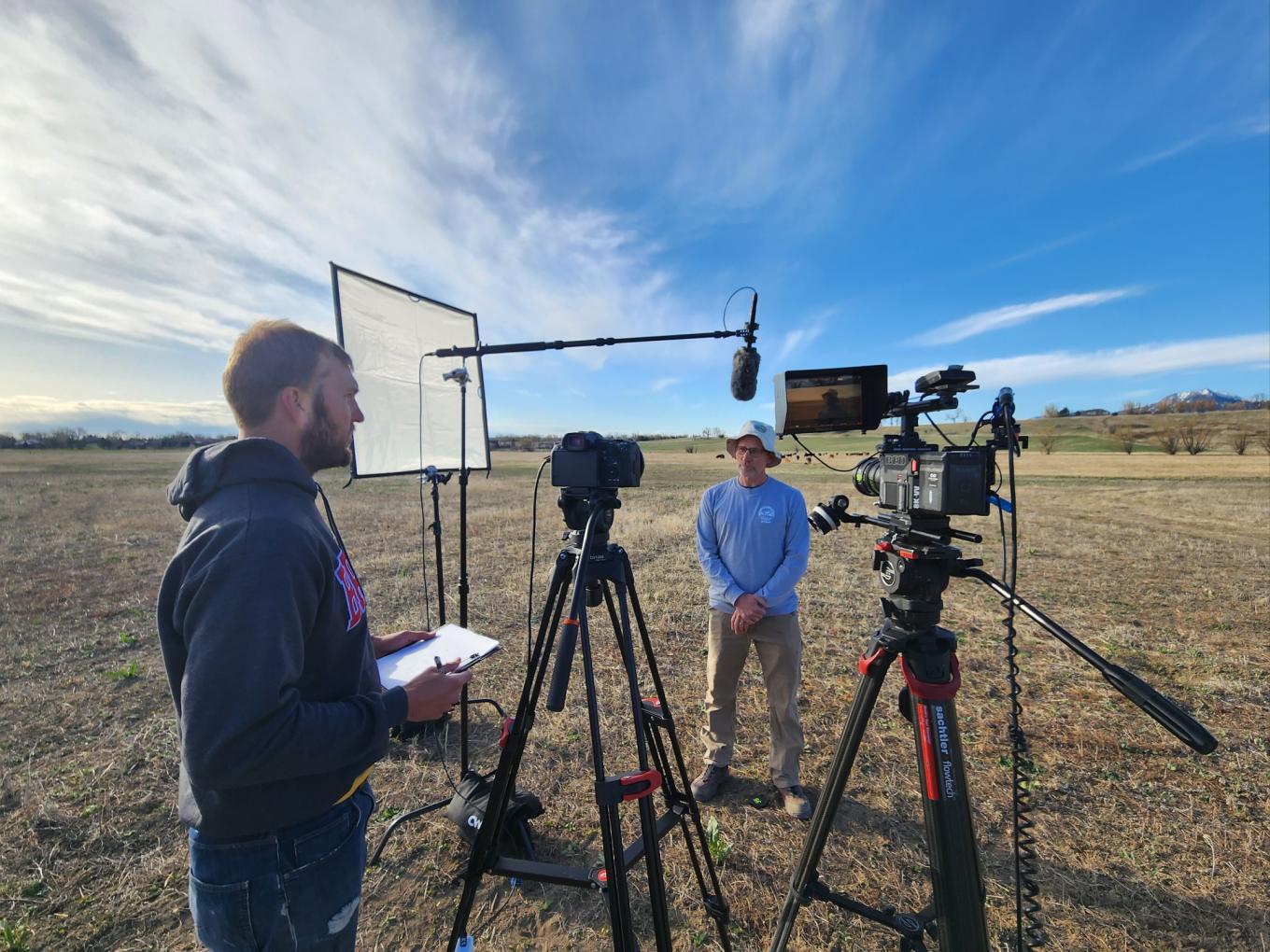
The Mad Agriculture Journal
Into the Soil: Chad Weber’s Lens on Living Systems
Published on
April 01, 2025
Interview by
Jonnah Perkins
Photos by
Chad Weber
Mad Agriculture’s Director of Media, Jonnah Perkins, sat down with filmmaker Chad Weber to discuss Peaks to Prairie, a visually arresting short film exploring the unseen world of soil, fungi, and regenerative agriculture. What began as a creative experiment in macro cinematography grew into a layered portrait of ecological collaboration on Colorado’s Front Range. From his lens-focused curiosity to his reflections on craft, Chad offers insight into what it means to tell stories that are both technically precise and deeply alive.
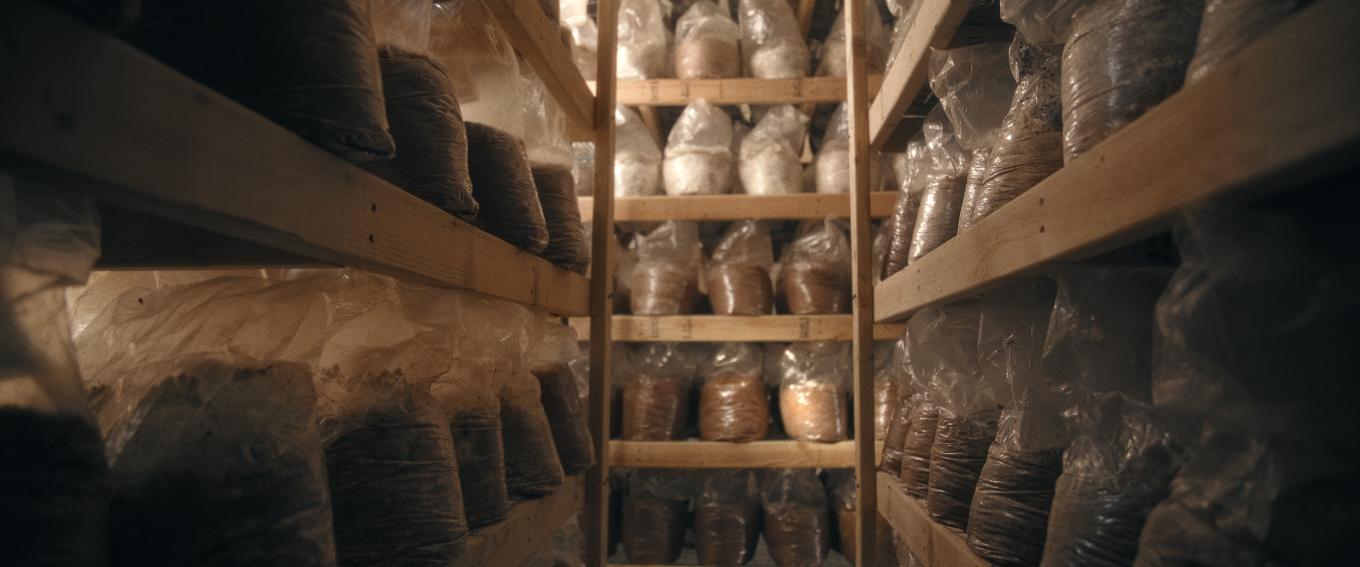
Jonnah
Thank you for having this conversation with me. We met through Boulder Mushroom and the Patagonia Boulder event where we screened your film Peaks to Prairie. I’d love to start by learning more about your path and the intention behind the project. Can you begin by introducing yourself in your own words?
Chad
For sure, I’m Chad Weber, a filmmaker based in Longmont, Colorado and I founded Free Range Films. I’ve been out here since 2019. I make documentary films about people and stories I’m curious about—often around agriculture and the environment. I’m always seeking out work that feels meaningful, and for me, that means exploring how we relate to land, food, and place.
Jonnah
I’m always curious about origin stories. What initially sparked your interest in filmmaking? Was there a moment when you knew this would be your path?
Chad
I would say it was a slow journey. Midway through college, I began studying TV production and worked at a local news station. From there, I shot weddings, real estate, worked at a marketing agency, and eventually went freelance in 2019. I slowly realized I was most passionate about documentary storytelling—curating stories in an authentic way and sharing people’s experiences with an audience. I love developing a curiosity about a subject or a person and trying to express that visually and emotionally.
Jonnah
Let’s talk about Peaks to Prairie. It’s a visually stunning and richly layered piece. What was the creative and collaborative spark that launched the project?
Chad
Thank you. Well last year client work started slow, and so I began experimenting with macro shots in my free time—really close-up footage of patterns in nature. I became curious about mushrooms and reached out to Zach from Boulder Mushroom. We met up and I filmed some macro footage of mycelium in Petri dishes. Later, Zach called to pitch a video project with Andy from Grama Grass and Maya from the Boulder Watershed Collective. They’d seen my previous film Bluebird Sky and thought I’d be a good fit. That conversation evolved into Peaks to Prairie. It started as something small, but grew into this broader story that connects ecology, agriculture, and systems thinking in a really hands-on way.
Jonnah
For those unfamiliar with macro filmmaking, can you walk us through what it means technically—and what it unlocks creatively?
Chad
Macro means filming extreme close-ups to show details the human eye can’t typically see. You need a special lens with a very short focal distance. I used a probe macro lens—kind of like a telescope—that lets you film right up close, even inside things or underwater. It’s not a microscope, but it reveals textures and structures in a whole new way. I also use diopters and other tools to adjust the focal plane and work with different lenses. It lets you tell stories from the perspective of the smaller things—fungi, insects, particles—things we tend to overlook.
Jonnah
That immersive visual language really comes through in the film. Can you share more about how you used macro to support the storytelling?
Chad
For sure. We used the probe lens to film mycelium in Petri dishes and in liquid form. Some shots were in super slow motion. Most people, like myself, have never seen mycelium in this way, so it was really cool to be able to capture and meet this new “character” in the film. I also wanted viewers to experience soil in an immersive way. The lens has a built-in light, so I could actually insert it into inoculated woodchip piles and soil to capture mycelial growth and moisture. I also used it to film insects, and added some older macro footage I had of fire, which tied in beautifully. There’s something powerful about making people feel like they’re inside the landscape—inside the microcosm.
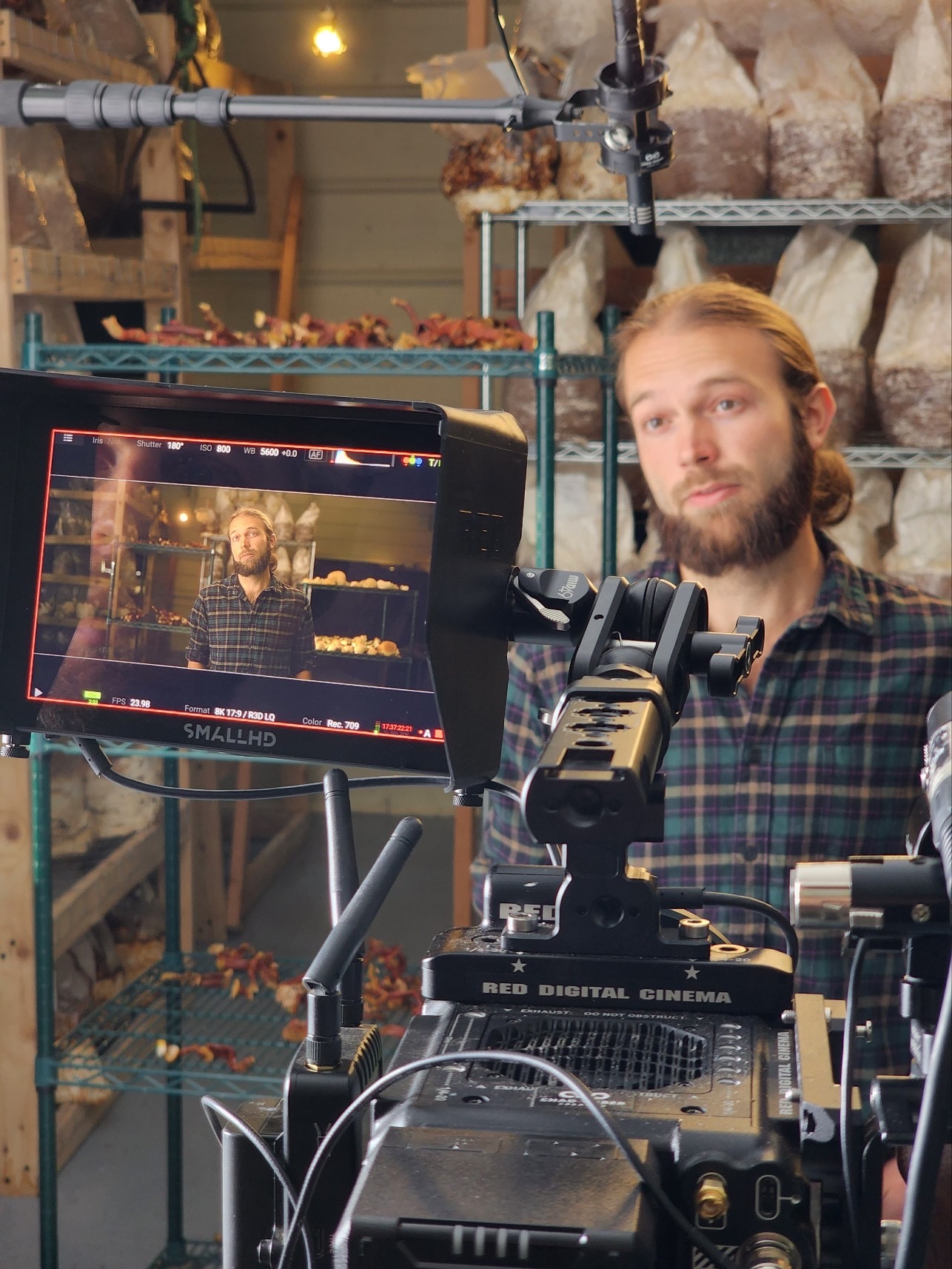
Jonnah
You clearly have a deep technical toolkit, but there’s also an emotional and narrative fluency in your work. How do you navigate the space between precision and story?
Chad
It’s a challenge. Peaks to Prairie is one of my least human-centric films. It’s more focused on information and ecological systems. But I tried to trust my intuition and let the story guide the tone. I also think people are fatigued by climate doom, so I just focused on facts and real-world solutions. In this film, the character was the non-human world—the soil, fungi, cattle. I wanted viewers to care about those relationships and the holistic nature of our environment. I wanted the emotional weight to come from the intimacy with the land itself.
Jonnah
Documentary timelines can be unpredictable. How long did Peaks to Prairie take from first shot to final cut?
Chad
It took about a year, starting in March of 2024. I was juggling client work, and a lot of filming depended on timing—like waiting for cattle to be released on the woodchips. I even rented an 800mm lens to capture that. We also had some trial and error filming attempts, like failed time-lapses trying to film fungal growth in a fish tank. I also did pickup shots of irrigation systems and native grasses to fill in some gaps. A lot of waiting, testing, and adapting. But over time, all the elements came together.
Jonnah
Did the final version reflect your original vision—or did it evolve along the way?
Chad
I rarely have a concrete vision up front. I’m more about feel and rhythm. The final cut ended up longer than expected—balancing clarity, engagement, and nuance was tough. But there are moments I love. The scene with the cows stomping on the woodchips to the lyric “the natural rattle” felt really special. That kind of poetic resonance is what I always hope to find.
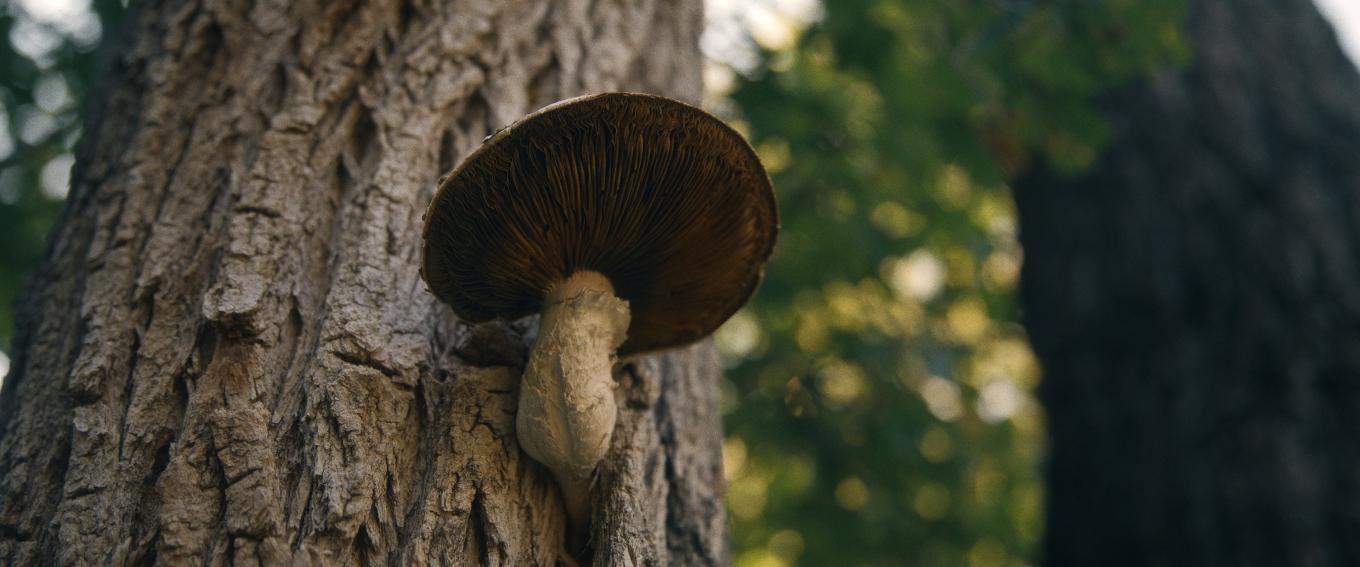
Jonnah
I remember that moment—it landed so beautifully in the room. When we screened the film at Patagonia, the audience was fully engaged. What was it like for you to witness that live reaction?
Chad
It was great. One moment that stood out was the line where Zach almost comedically says, “Mushrooms?,” and laughs. It landed with the audience and gave a light moment in a fairly dense film. That kind of reaction is really rewarding. You never know how something will land until you’re in the room with people experiencing it.
Jonnah
Where can people go to experience the film for themselves?
Chad
We have a screening on April 15 at the Dairy Arts Center in Boulder. We are also entering into film festivals and were recently accepted into the Ouray Film Festival which runs June 19-21. We expect to post the full film on Youtube at some point but don’t have a concrete date yet.
Jonnah
You mentioned that your earlier work leaned into more intimate, human-centered stories. What are you curious about exploring next?
Chad
I might keep exploring this subject with Zach—there’s more to dig into with mycelium and forest ecosystems. Right now, I’m working on a film about agrivoltaics, the co-location of solar and agriculture. I’ve interviewed over 25 people across Colorado—farmers, ranchers, county commissioners, solar developers—trying to capture how this can support farmer livelihood, water conservation and climate resilience. It’s a human-centered story too. Right now I’m in the thick of production, and things often feel difficult. But that’s part of the creative process. Every project has its own rhythm and challenge.
Jonnah
What’s the most challenging part of your craft that people might not see?
Chad
Making decisions. There are so many choices in film, and every day you bring a different headspace. Sometimes magic happens, sometimes it doesn’t. You need to stay curious and not get too stressed. But it’s hard. There’s no formula. Some days you feel inspired, others you don’t—and that’s part of it. You have to stay open.
Jonnah
That resonates. In documentary, you’re constantly navigating tone, structure, and emotional truth. It’s a delicate dance.
Chad
Totally. It’s about balancing engagement with nuance. A commercial grabs your attention, but lacks depth. A three-hour podcast gives deep context, but might lose your interest. Documentaries live in between—you need emotional resonance, but also substance. It’s always a tough balance.
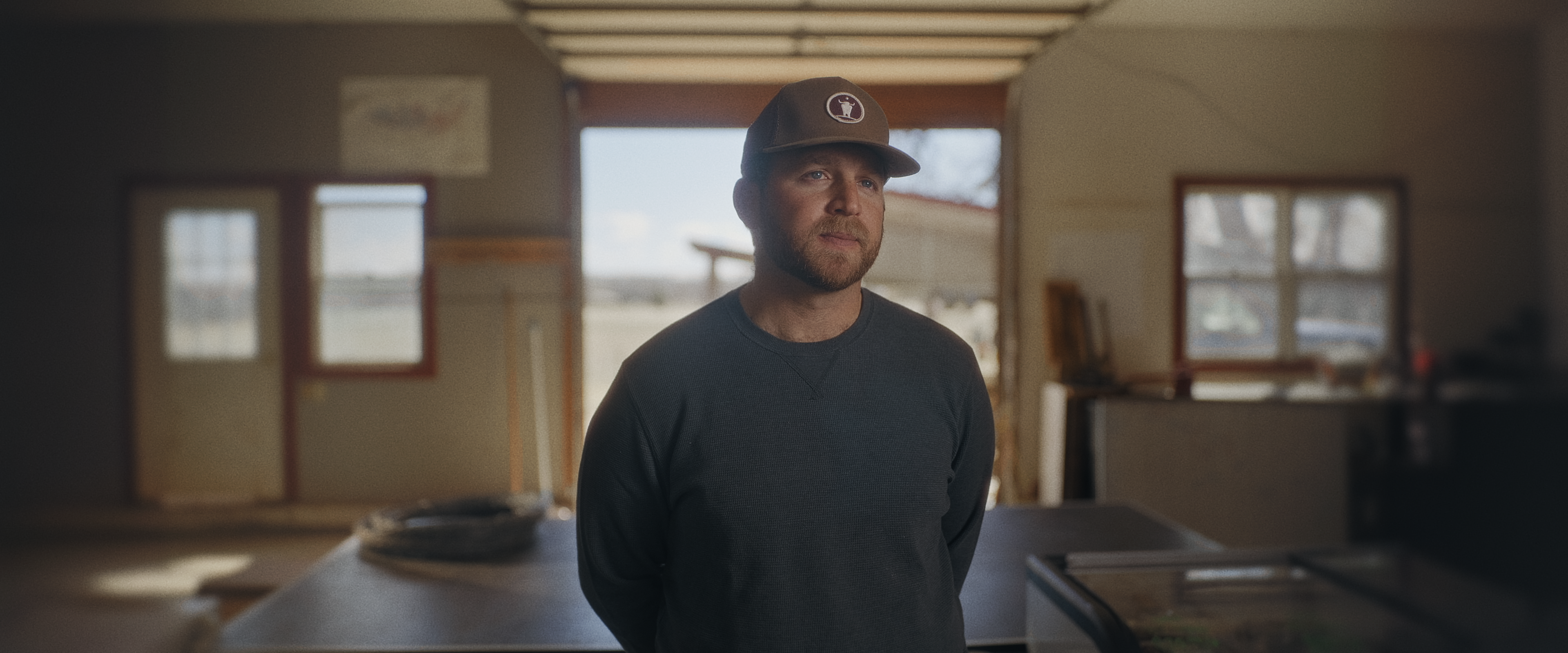
Jonnah
I’ve heard the editing process described as “killing puppies.” Were there any moments or scenes you had to let go of in service of the greater story?
Chad
Yes. We wanted to include more about inoculating woodchips in the forest ecosystem, but it would’ve shifted the focus of the film. So we trimmed it down to a brief mention at the end. Hopefully it sparks curiosity. I had to let go of some shots I loved, too—ones that didn’t serve the story’s core arc. That’s always hard.
Jonnah
You’ve made something truly moving and grounded. As you share this film with new audiences, what reflections are you carrying forward—about this work, or about this moment in time?
Chad
Agriculture is such a meaningful audience to create for. We share a curiosity and a care for the earth. I want people to think about living more like nature—less waste, more awareness of cycles. Honestly, right now in 2025, I feel discouraged. Our political leadership doesn’t seem aligned with that vision. But I know there’s still an audience that will connect deeply with this work. That keeps me going. That gives me hope.
